If you ever find yourself face-to-face with a wild bear, knowing how to handle the situation can make all the difference. Bears are majestic creatures, but they can also be dangerous if they feel threatened. It’s crucial to stay calm and understand the dos and don’ts of bear encounters. Here are 14 things you should never do if you see a wild bear.
1. Run Away
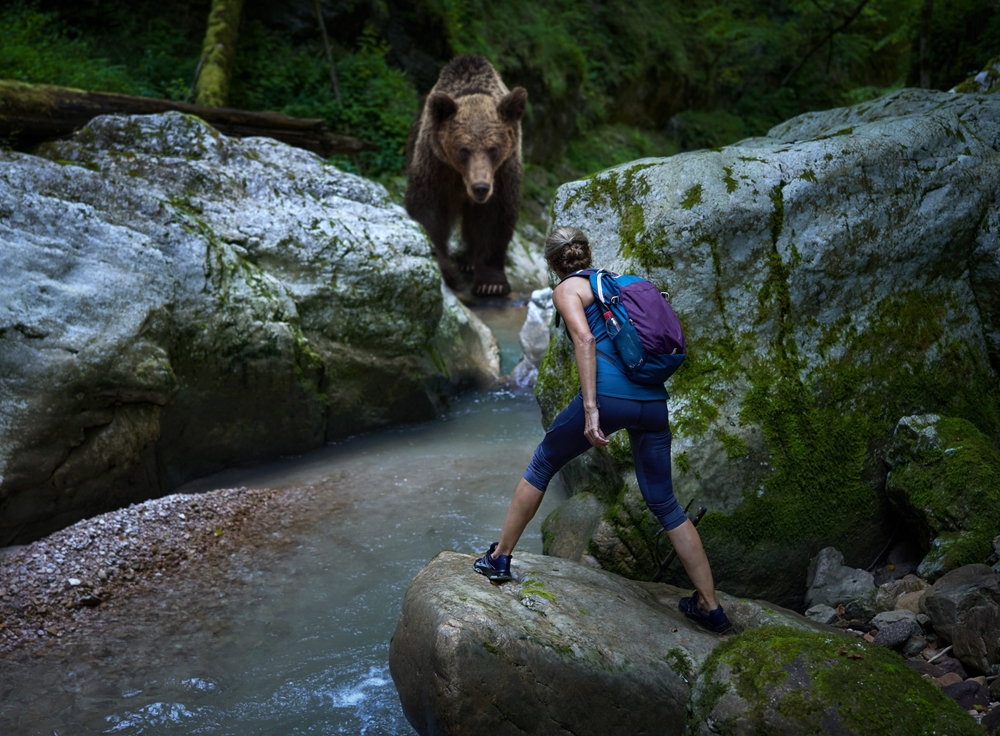
Running might be your first instinct, but it’s definitely not the best idea. Bears can run much faster than humans, reaching speeds of up to 35 miles per hour. If you run, it could trigger the bear’s predatory instincts, making things worse. According to the U.S. National Park Service, it is better to stand your ground and assess the situation calmly. Make sure to give the bear plenty of space, and try to identify the type of bear it is, as different species react differently to humans.
Instead of running, slowly back away while keeping the bear in sight. Do not turn your back on the bear, as this might invite it to approach out of curiosity or aggression. Talk to the bear in a calm, assertive voice to let it know you’re a human and not prey. Your goal is to show the bear you’re not a threat. Remember, bears usually want to avoid humans as much as you want to avoid them.
2. Climb A Tree
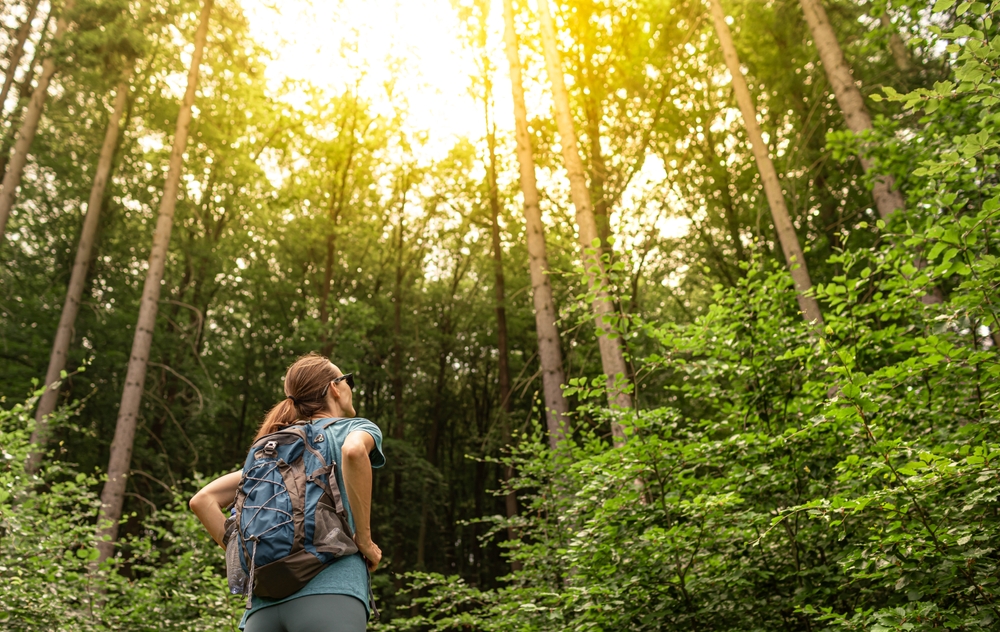
Climbing a tree might seem like a good escape plan, but bears are impressive climbers. Both black bears and grizzly bears can easily follow you up a tree, leaving you with nowhere to go. Instead of climbing, remain on the ground and prepare to face the bear if necessary. By climbing a tree, you might find yourself trapped, increasing your vulnerability.
Staying grounded gives you more options to react and defend yourself if needed. It’s also important to keep in mind that climbing can tire you out quickly, leaving you less capable of dealing with the bear. Focus on creating distance between you and the bear by backing away slowly. The more space you put between you and the bear, the safer you’ll be. Always prioritize staying calm and maintaining your footing.
3. Scream Or Shout

While you should make noise to alert the bear to your presence, screaming or shouting can be counterproductive. Loud, sudden noises may startle the bear, potentially leading to an aggressive response. Dr. Lynn Rogers, a biologist specializing in black bears, suggests speaking in a calm, monotone voice instead. This helps the bear recognize you as a non-threatening human, which can prevent an escalation in the encounter.
By staying calm and speaking softly, you show the bear that you aren’t afraid and mean no harm. This also gives the bear a chance to retreat peacefully, which is usually its preferred option. If the bear doesn’t show signs of aggression, continue to back away slowly while maintaining eye contact. Avoid making sudden movements that could provoke a reaction. Remember, the key is to defuse the situation without causing alarm.
4. Make Eye Contact

Making direct eye contact with a bear can be interpreted as a challenge, which might provoke an aggressive response. Bears, like many animals, can perceive staring as a threat, so it’s best to maintain a peripheral watch. Instead of locking eyes, keep the bear in your line of sight without focusing directly on it. This approach allows you to monitor its movements without escalating the situation.
By avoiding direct eye contact, you give the bear an opportunity to feel less threatened by your presence. It’s important to remember that most bears are not looking for a confrontation. They are typically more interested in protecting themselves or their cubs. By showing the bear that you respect its space, you increase the chances of a peaceful resolution. Remember to continue backing away slowly while remaining vigilant.
5. Play Dead Immediately
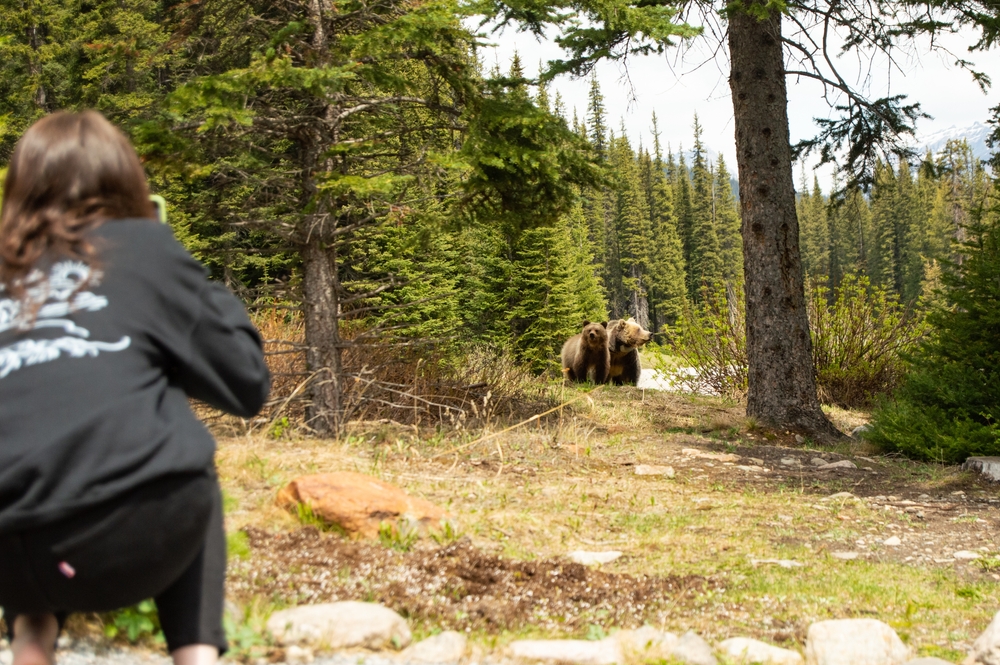
Playing dead is a tactic often recommended for certain bear encounters, but timing is crucial. If the bear is merely curious, dropping to the ground could actually invite it to investigate further. A 2017 study by bear behavior expert Dr. Stephen Herrero highlights that playing dead is more suitable when dealing with a defensive bear. This is typically a bear that feels threatened or is protecting its cubs. Understanding the bear’s behavior is key to deciding when to use this tactic.
If the bear makes contact or if it’s a defensive attack, playing dead might be your best option. Lie on your stomach with your hands over the back of your neck, and spread your legs to make it harder for the bear to turn you over. Remain still until you’re certain the bear has left the area. If the bear leaves, wait several minutes before getting up, ensuring your safety. Remember, playing dead is a last resort, not a first response.
6. Approach The Bear

It might sound obvious, but approaching a wild bear is a big mistake. Even if the bear doesn’t seem to notice you initially, getting closer can quickly change that dynamic. Bears are territorial and might perceive your approach as a threat. Approaching can also increase the chances of startling the bear, which can lead to defensive behavior. Instead, stay at a distance and give the bear plenty of space to move away.
By keeping your distance, you’re respecting the bear’s need for space and reducing the likelihood of a confrontation. Use binoculars or a camera with a zoom lens if you want a closer look, but never encroach on the bear’s territory. Remember that bears are powerful animals, and their response to feeling cornered can be swift and dangerous. Always prioritize safety over curiosity. Keeping your distance is the best way to protect both yourself and the bear.
7. Feed The Bear
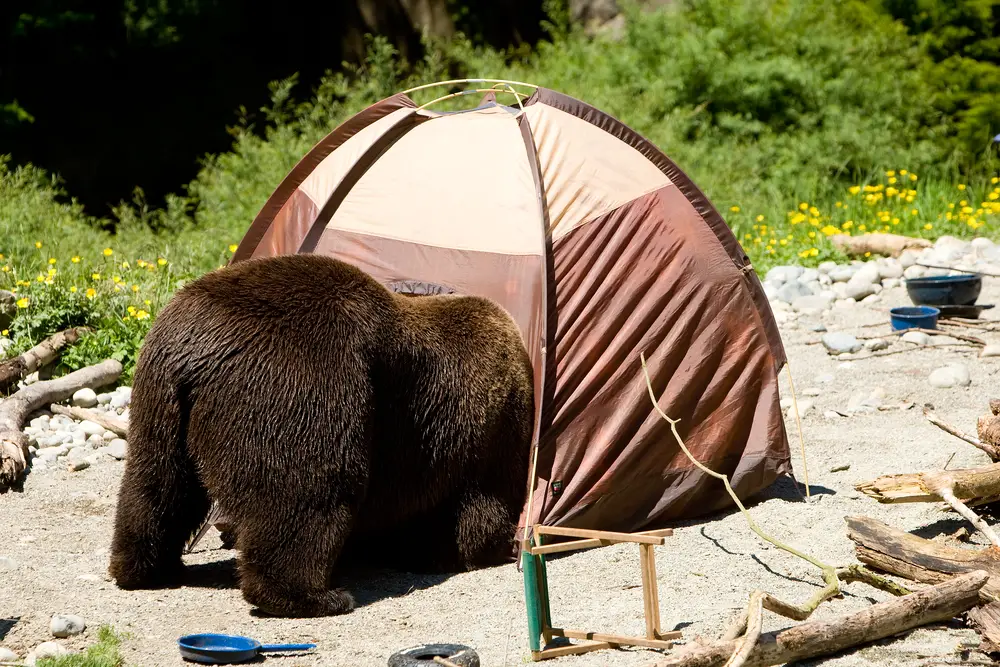
Feeding a wild bear is one of the worst things you can do, as it can lead to long-term problems for both the bear and humans. Habituating bears to human food can make them reliant on it, reducing their natural foraging behavior. Wildlife expert Dr. Chris Servheen notes that food-conditioned bears can become aggressive as they lose their natural fear of humans. This often leads to bears being euthanized to prevent dangerous encounters. By feeding a bear, you’re not helping—it’s a death sentence for the animal.
Instead, secure all food items and dispose of waste properly to prevent bears from accessing it. Bears have an acute sense of smell, so even a small amount of food can attract them from a distance. By ensuring that you leave no trace, you help keep bears wild and reduce the chances of problematic interactions. Always store food in bear-proof containers or hang it out of reach when camping. Remember, a fed bear is often a dead bear.
8. Turn Your Back
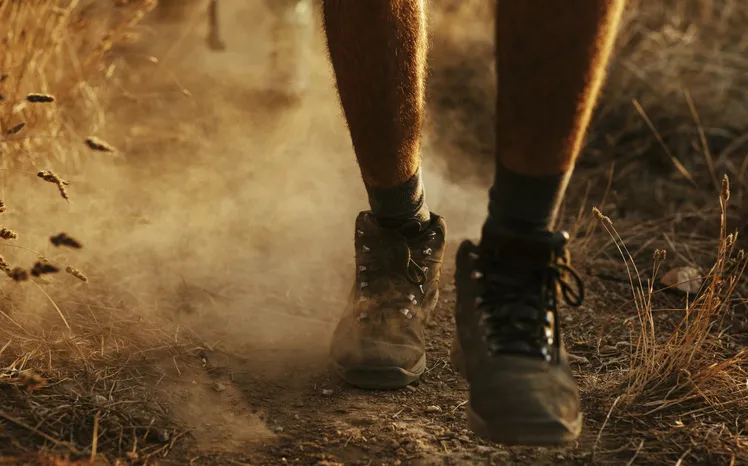
Turning your back on a bear is a risky move that can make you appear vulnerable or provoke an attack. When you’re not facing the bear, you can’t monitor its actions or anticipate its next move. This makes it harder to react appropriately if the bear decides to approach or charge. Always keep the bear in your line of sight, even as you slowly back away.
Facing the bear allows you to assert your presence, which can help discourage it from coming closer. Maintain a calm demeanor and avoid making any sudden movements that could startle the bear. By staying aware of the bear’s behavior, you can better assess the situation and decide on the best course of action. Remember, awareness is your best tool in avoiding a dangerous encounter. Always prioritize your safety by staying alert.
9. Ignore The Environment
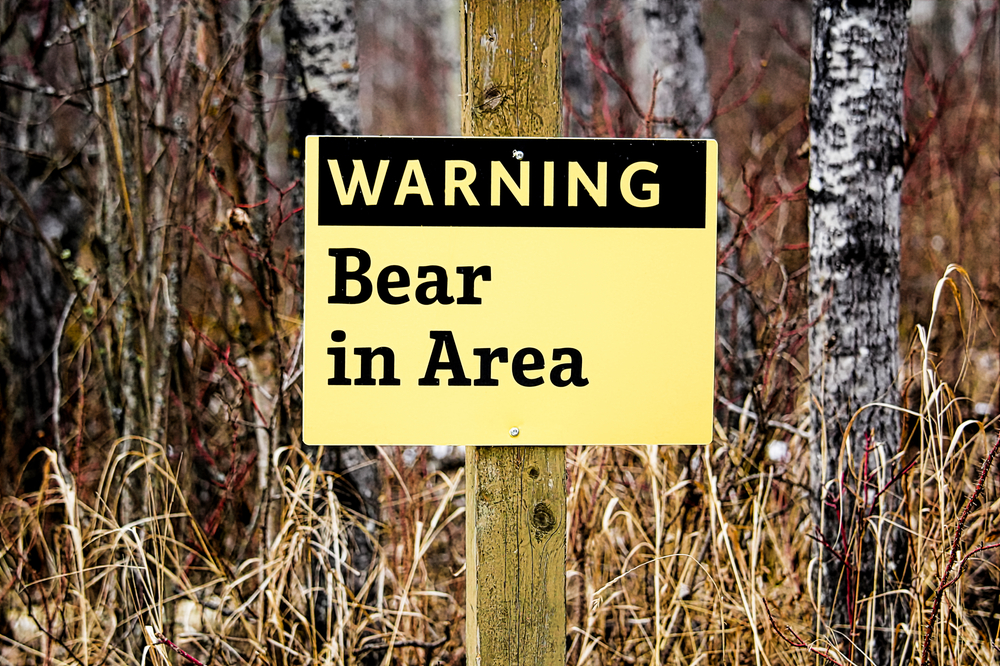
Failing to pay attention to your surroundings can increase the risk of a bear encounter. Bears often live in areas with dense vegetation or natural cover, making them hard to spot from a distance. By staying aware of your environment, you can detect signs of bears, such as tracks, scat, or markings on trees. Knowing where you are and where the nearest safe location is can be vital.
Awareness also extends to understanding bear behavior and habitat. When hiking in bear country, make noise to alert bears of your presence, reducing the chance of surprising them. Stick to established trails and avoid areas with dense brush where bears might be resting or feeding. By being mindful of your surroundings, you increase your chances of avoiding a bear encounter altogether. Stay vigilant and keep your senses attuned to the world around you.
10. Assume All Bears Act The Same
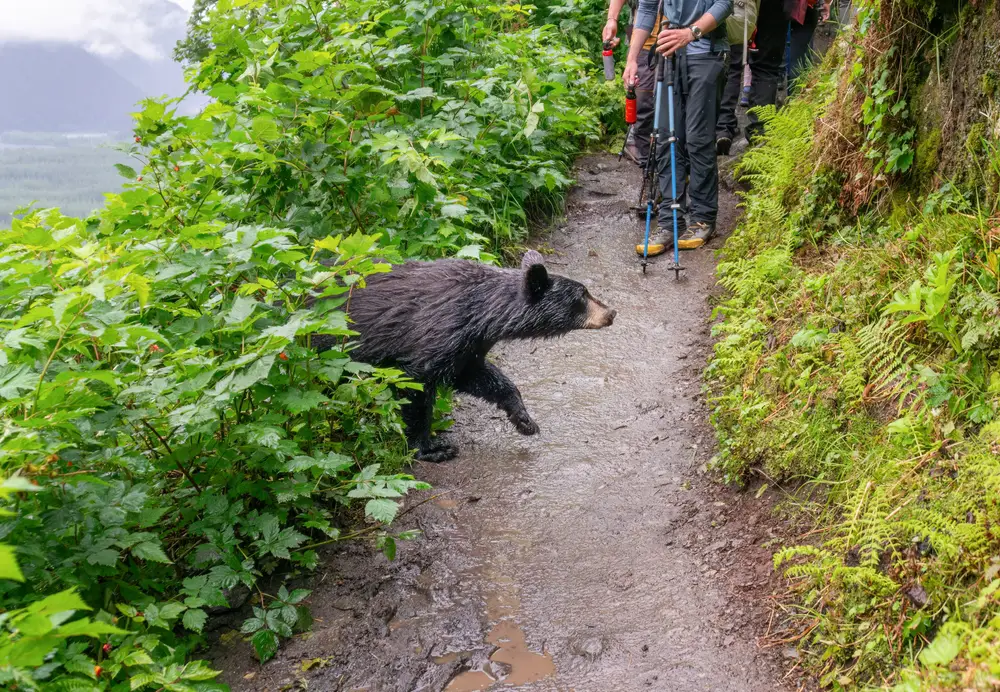
Different species of bears have different behaviors and responses to human encounters. For example, black bears are more likely to be scared off by loud noises, while grizzly bears might react defensively. Understanding these differences can be crucial in determining the right course of action when you encounter a bear. Always familiarize yourself with the type of bears present in the area you’re visiting.
By understanding the specific characteristics of the bears in your area, you can better prepare for potential encounters. Researching local wildlife and consulting with park officials or local guides can provide valuable insights. Tailor your approach to the type of bear you might meet, and remember that each situation is unique. Being informed can make a significant difference in how you handle a bear encounter. Knowledge is a powerful tool in ensuring both your safety and the bear’s.
11. Approach Bear Cubs

Bear cubs might look adorable, but getting close to them can lead to a dangerous situation. Mother bears are highly protective of their young and can become aggressive if they perceive a threat. Even if the cubs seem alone, their mother is likely nearby, watching closely. Approaching cubs can provoke a defensive response from the mother bear, putting you at significant risk.
Instead, if you spot bear cubs, quietly and quickly move away from the area. Avoid making any noise or movements that could attract the mother’s attention. The goal is to leave the area without alerting the bears to your presence. Remember, bears are best admired from a safe distance to ensure the safety of both humans and wildlife. Respect the bears’ space and allow them to raise their young without disturbance.
12. Forget Bear Spray
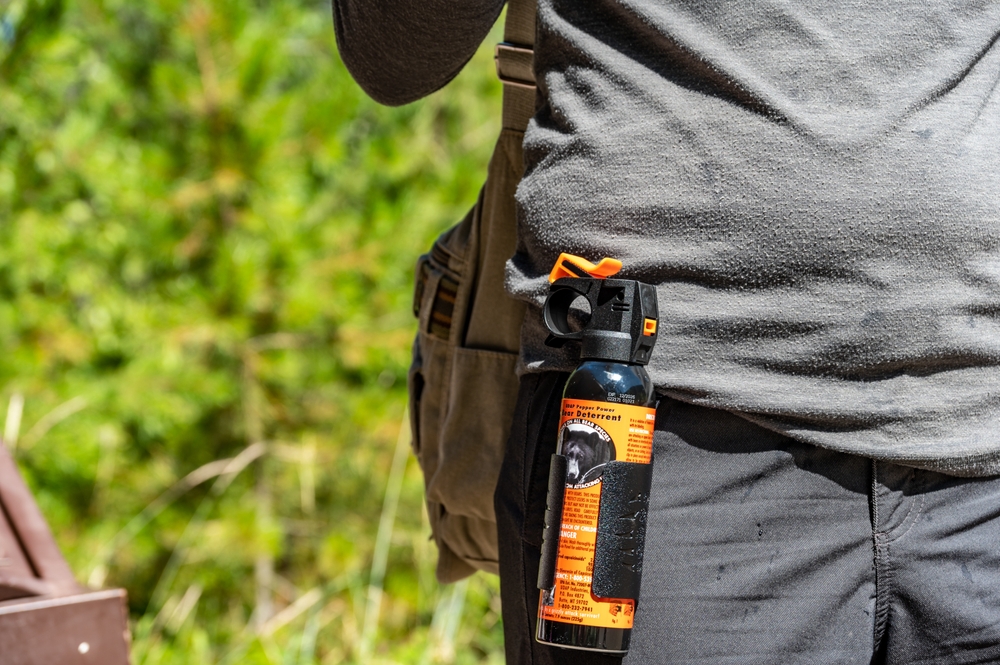
Bear spray is one of the most effective tools for deterring a charging bear, yet many people overlook bringing it on their outdoor adventures. It’s an essential piece of gear when traveling in bear country, providing a non-lethal way to protect yourself. Bear spray contains capsaicin, a natural deterrent, and can stop a bear from approaching further. Always carry it in an easily accessible place, such as a holster on your belt.
Knowing how to properly use bear spray is just as important as having it with you. Practice removing the safety cap and aiming before you head out into bear territory. In an emergency, you’ll need to act quickly and confidently. Using bear spray effectively can provide a critical window to escape safely. Never underestimate the importance of being prepared in bear country.
13. Get Between A Bear And Its Food
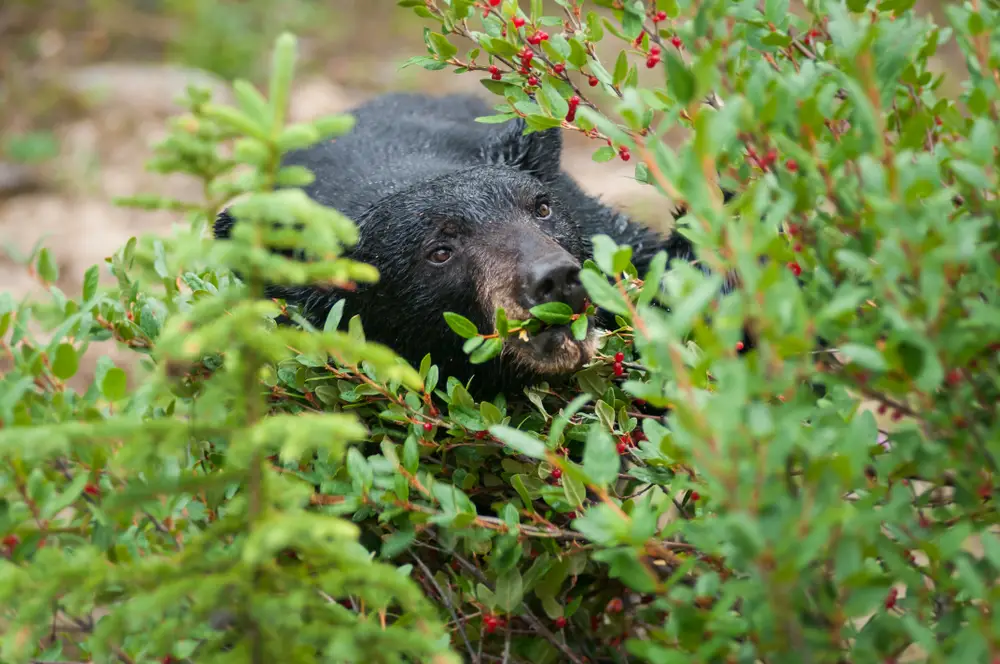
Bears are highly protective of their food sources, and getting between a bear and its meal can provoke a dangerous response. If a bear is feeding, give it plenty of space and avoid interrupting its meal. Bears often travel great distances for food, and any perceived threat to their sustenance can lead to aggressive behavior. Your best bet is to slowly and silently back away, leaving the bear to its business.
Understanding bear behavior around food can help you avoid dangerous situations. Bears have an incredible sense of smell and are likely to defend their food against perceived threats. Never attempt to take food from a bear or disturb it while eating. Keep your distance and respect the bear’s right to feed undisturbed. Prioritizing your safety means leaving the area quietly and quickly.
14. Enter Bear Dens
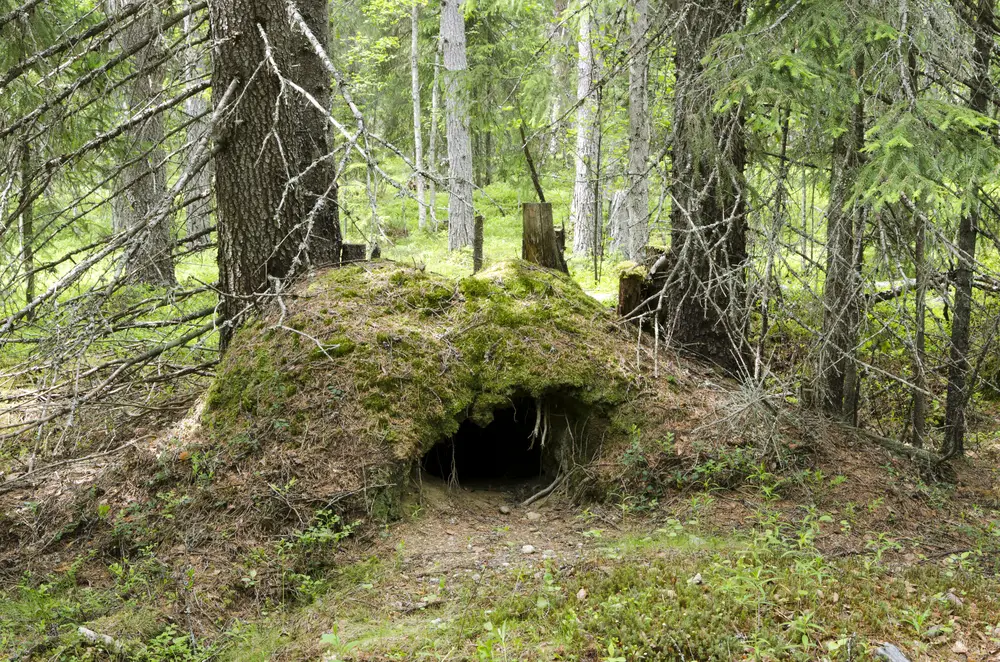
Bear dens are a sanctuary for bears, especially during hibernation or when raising young cubs. Entering a den can be highly dangerous, as bears can react aggressively to protect their space. Even if the den appears unoccupied, it’s best to keep your distance. Disturbing a bear in its den can lead to unpredictable and defensive behavior.
Avoiding bear dens not only protects you but also contributes to the conservation of wildlife. Bears need secure, undisturbed areas to rest and rear their young. If you come across a bear den, mark its location and report it to local wildlife authorities. This helps them monitor bear populations and ensure both human and bear safety. Always respect a bear’s home as you would your own.
